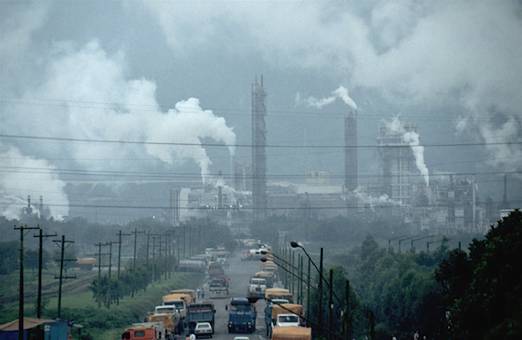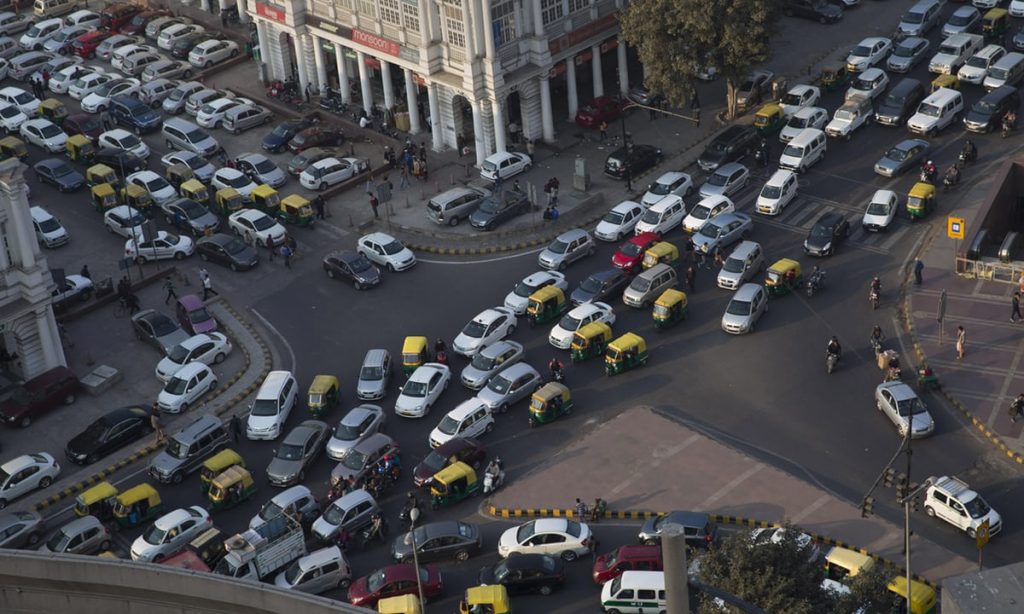There are few cities of India
Air Pollution as generally described as the presence of toxic gases, chemicals and pollutants which are present in the air which causes a greater amount of health risks to living beings. Air Pollution, as opposed to the natural state of its occurrence, is mostly caused by the Human formed activities. There are various activities done by humans such as mining, construction, transportation, industrial work, agriculture, smelting, etc. These activities cause the depletion of Ozone Layer, an increase of global warming and the most dangerous smog, which is above the area 24/7.
Air Pollution has emerged as one of the most dangerous environmental problem causing health issues and a lot of countries are trying to tackle this problem through different means:-

INDIA
India has been one of the fastest developing countries in the world but along with that power, there have also been serious health issues that are being caused by severe air pollution caused in the country. And there have been various methods for it being tackled like:-
- Due to the raised negative impacts of air pollution on public health, top 8 doctors of the country have joined hands together to form (AIR) council. Namely, paediatrician Dr Bakul Parekh, chest physician Dr Ashok Mahashur, interventional cardiologist Dr Akshay Mehta and gynaecologist Dr Rishma Pai. The other four are Chennai-based paediatric pulmonologist De. Vijaya Sekaran, paediatrician Dr Pramod Jog and interventional cardiologist Dr Shirish Hiremath, both from Pune, and Dr Hema Diwakar from Bangalore. The council will endeavour to get to the root of the menace, collect data to link air pollutants to diseases, and eventually get the public and government to bring change gradually.
- Recently the Indian government took some steps in this direction committing to a 50% reduction in households using solid fuel for cooking and, last December, removing subsidies for polluting cooking gas to improve access to clean fuel for household cooking.
- India recently included an additional target on reducing air pollution to the nine targets set out in WHO’s Global action plan for the prevention and control of NCDs 2013–2020 in its national NCDs strategy.
- Preparation of action plan for sewage management and restoration of water quality in aquatic resources by State Governments;
- Comprehensive amendments to various Waste Management Rules including Municipal Solid Waste, Plastic Waste, Hazardous Waste, Bio-medical Waste and Electronic Waste notified.
- The ban on burning of leaves, biomass, municipal solid waste.
- Delhi
Delhi has been credited as the second most polluted city in the world, which according to a lot of surveys has been growing towards being the most polluted city in the world. Some steps being taken by the city are:-
- Installing of 2,000 new public DTC buses by the year 2018, to tackle air pollution created by private transports.
- The city has experimented with alternatively banning of cars for an odd and even number and is now encouraging Uber-style minibuses on demand.
- There has been a plan to stop dumping at the Ghazipur Landfills due to it’s over the dumping of solid waste.
- Bangalore
- Due to an ambiguous amount of air pollution, Karnataka State Pollution Control Board (KSPCB) has installed new five continuous ambient air quality monitoring stations (CAAQMS) in Bengaluru to monitor air pollution.
- ‘Breathe Bengaluru’, a project for assessment of the city’s air quality, is currently being undertaken in BTM layout. Breathe Bengaluru is taking a bottom-up, ‘people first’ approach to tackling air pollution, bringing in multi-disciplinary perspectives and public participatory mechanisms.

EUROPE
European countries have been trying extremely hard to tackle the phenomenon of air pollution.
- Paris
- In 2015, there was an introduction of emergency traffic bans on days of high pollution. The bans affect half of the vehicles, as access to the city is limited to odd- or even-numbered plates.
- In the Mayor’s Summit, it was decided that all diesel vehicles would be banned.
- There are plans for extending the car-free zone, as well as transforming some car lanes into bike lanes.
- London
- Polluted air from the continent combines with toxic air in London to create dangerous levels of pollution that’s why the Mayor of London, Sadiq Khan has claimed an alert on the air quality.The alerts will see warnings displayed at bus stops, road signs and on the underground. Khan has also asked TV and radio stations across the capital to warn their viewers and listeners in news bulletins.Anyone with lung or heart problems is advised to reduce strenuous exercise, especially outside. The young and elderly are particularly vulnerable. It is the seventh time in 13 months that the mayor has used the alert system. One instance was because the level of pollution was deemed “very high”, and on six occasions because it was “high”.
-
- In 2019, Khan wants to create an “Ultra-Low Emission Zone” in central London, where polluting vehicles will have to pay an extra fee.
- Madrid
- During February 2016, Madrid created an emergency protocol that considers four different scenarios. The higher the air pollution is, the more severe the restrictions are.
- Throughout 2016 Madrid had to enforce the ‘scenario 2’ protocol several times, reducing speed limits and restricting parking. And in December, the high levels of air pollution forced the mayor to activate ‘scenario 3’ for the first time.
- Madrid has also agreed to ban all Diesel vehicles by 2025.
- Madrid’s mayor, Manuela Carmena, has recently announced that by 2018 the Gran Via, one of the city’s landmark streets, will be pedestrianised.

UNITED STATES
The United States has also been in a way using its measures to tackle air pollution in its own form.
- New York City
- New York city had been working with its Adaptation & Resilience and has been on a task for its comprehensive and actionable plan, which focuses on rebuilding the communities impacted by Superstorm Sandy and increasing the resilience of infrastructure and buildings citywide. The 250 initiatives are not only bold proposals that can be implemented immediately: 60 will be achieved by the end of 2013 and $10 billion in funding has already been identified to support implementation.
San Francisco
- San Francisco had been working on its zero waste management programme, which began in 2002 and includes comprehensive waste management reforms, and has resulted in an unprecedented 80% landfill diversion rate. An impressive 300 tons of food scraps are collected per day, and 100 million fewer plastic bags are being used every year, putting the city well on its path to achieving it’s ambitious zero was a goal by 2020.
This post is also available in:
English